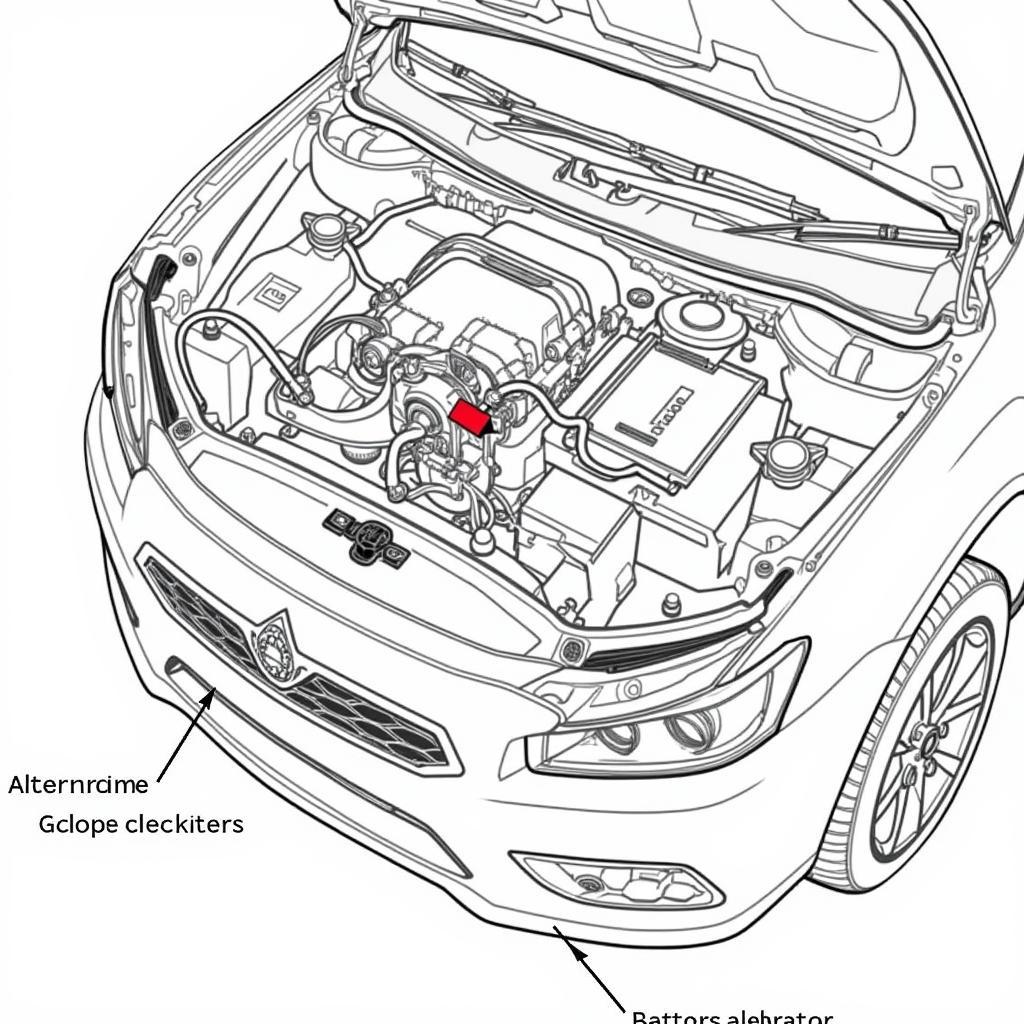Is your car struggling to start? Are your headlights dimming? You might be asking yourself, “is my battery bad or my alternator?” This common question plagues many drivers. This guide will help you diagnose the problem and get back on the road. We’ll cover the functions of both components, common symptoms of failure, and troubleshooting steps to pinpoint the culprit. Let’s dive in and get to the bottom of your car trouble. is my alternator bad or battery
Understanding the Battery and Alternator
Your car’s battery and alternator work together to power the electrical system. The battery provides the initial jolt of electricity to start the engine. Once the engine is running, the alternator takes over, recharging the battery and powering all the electrical components like the lights, radio, and power windows. If one of these components fails, the entire electrical system can be compromised.
The Battery’s Role
The battery is like a reservoir of electrical energy. It stores power and releases it on demand. Think of it as the starting pitcher in a baseball game, providing the initial push to get things going.
The Alternator’s Role
The alternator is the workhorse, constantly generating electricity while the engine is running. It’s like the relief pitcher, keeping the game going after the starter has done its job. It also replenishes the battery’s charge, ensuring you’re ready for the next start.
 Car Battery and Alternator Diagram
Car Battery and Alternator Diagram
Signs of a Bad Battery
A failing battery can manifest in various ways. Common symptoms include:
- Slow engine crank: The engine struggles to turn over, often accompanied by a clicking sound.
- Dim headlights: The headlights are noticeably dimmer than usual, especially when the engine is idling.
- Interior lights flicker or are dim.
- Difficulty starting the car, especially in cold weather.
- The battery warning light illuminates on the dashboard.
Signs of a Bad Alternator
A malfunctioning alternator can also cause a range of problems:
- Dim or flickering headlights that brighten when accelerating.
- Grinding or whining noises coming from the engine compartment.
- The battery warning light stays on even after the engine has started.
- Electrical accessories, like the radio or power windows, malfunction.
- The car stalls while driving.
How to Tell if it’s the Battery or Alternator
Here’s a simple test to help you determine the culprit:
- Jump-start your car. If the car starts but dies again shortly after, the alternator is likely the problem. If it doesn’t start at all, or starts but continues to show the same symptoms after repeated jump-starts, then the battery might be at fault.
- With the engine running, disconnect the negative battery cable. If the engine dies immediately, the alternator is not charging the battery. However, this test can potentially damage sensitive electronic components in some newer vehicles, so proceed with caution or consult a professional.
- Check the battery voltage with a multimeter. A healthy battery should read around 12.6 volts with the engine off and around 14 volts with the engine running.
Is jump starting your car not working? This could indicate a more serious problem with either the battery, alternator, or even the starter. jump starting my car isn t working
Preventing Future Problems
Regular maintenance is crucial for preventing battery and alternator issues. Here are some tips:
- Have your battery tested regularly, especially during extreme weather conditions.
- Clean the battery terminals to ensure a good connection.
- Avoid leaving electrical accessories on when the engine is off.
If your car battery died while idling, it’s a clear sign that the alternator isn’t charging properly. car battery died while idling
 Car Alternator Inspection
Car Alternator Inspection
Conclusion
Knowing whether it’s your battery or your alternator that’s causing trouble is crucial for a quick and efficient fix. By understanding the symptoms and performing simple tests, you can pinpoint the problem and avoid being stranded. Remember regular maintenance is key to preventing future issues with your car’s electrical system. If you are unsure about any of these steps, it’s always best to consult with a qualified mechanic. If your battery is working but the car isn’t starting, the issue might lie elsewhere. battery working car not starting A car battery that won’t jump could be completely dead or have a serious internal fault. car battery wont jump
FAQ
- How long do car batteries typically last? Car batteries generally last between 3 to 5 years, depending on usage and climate conditions.
- Can a bad alternator damage a battery? Yes, a faulty alternator can overcharge or undercharge a battery, leading to premature failure.
- How much does it cost to replace a battery or alternator? The cost varies depending on the make and model of your vehicle, but generally, a battery replacement is less expensive than an alternator replacement.
- Can I drive with a bad alternator? You can drive a short distance with a bad alternator, but eventually, the battery will drain, and the car will stall.
- How often should I have my alternator checked? It’s a good idea to have your alternator inspected as part of your regular vehicle maintenance schedule.
- What are the signs of a dying alternator? Common signs include dimming headlights, a whining noise from the engine, and the battery warning light illuminating on the dashboard.
- Can a bad battery cause alternator problems? While a bad battery itself won’t damage the alternator, a consistently drained battery can put extra strain on the alternator, potentially shortening its lifespan.


